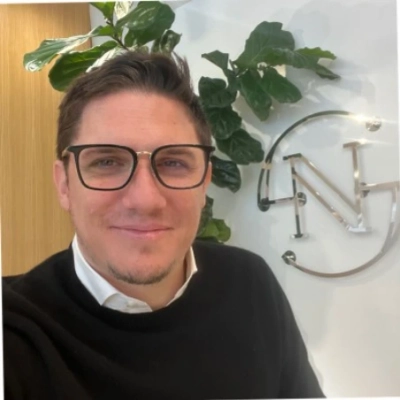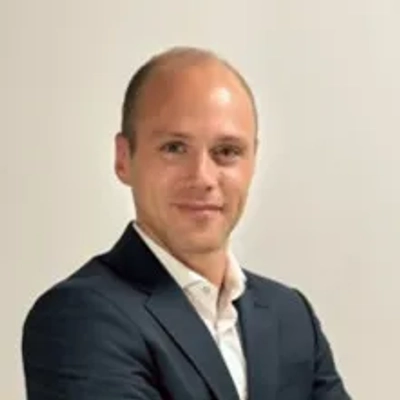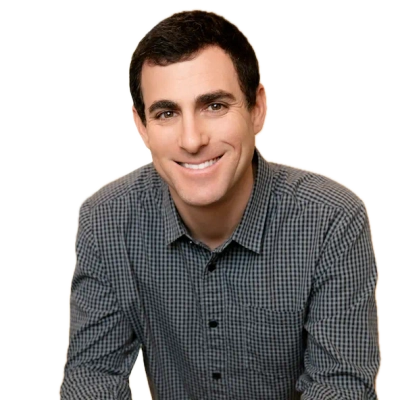25 Entrepreneurial Challenges and Strategies for Overcoming Them
Entrepreneurs face numerous challenges on the path to success, and this article presents 25 practical strategies drawn from experts who have overcome these common obstacles. The guidance covers essential skills from learning when to decline opportunities to creating systems that resolve industry bottlenecks, all designed to help business owners work smarter. These expert-backed approaches address both operational efficiency and personal well-being, providing actionable solutions for entrepreneurs at every stage of their journey.
Learn When to Say No to Projects
The hardest challenge was learning to say no to projects outside our expertise. Early on, we accepted a complex mobile app project because we needed revenue, and it nearly destroyed our reputation. Now we have a strict "only take projects where we can deliver 10/10 results" rule. Turning down revenue is painful short-term, but protecting your reputation and focusing on your strengths pays off exponentially.
Focus on Core Operations, Not Superficial Details
One unexpected challenge I faced as an entrepreneur was realizing I was wasting valuable time on superficial details rather than addressing core business operations. I recall working late one night obsessing over font spacing when our fundamental processes needed attention, which prompted me to hire an operations consultant and implement systematic documentation of our internal workflows. My advice to other entrepreneurs is to build your business to last rather than to impress, focusing your limited resources on sustainable growth strategies instead of getting caught up in aesthetic perfection.

Adapt to Digital Learning with Human Connection
Adapting to the rise of digital learning was one of the most unexpected challenges I faced. For most of my career, soft-skills development happened in classrooms and workshops where people could interact face-to-face. That setting allowed for meaningful discussions, collaboration, and connection. When the world began shifting online, it was clear that the old methods would not translate directly to a virtual format. I had to completely rethink what engagement meant in a digital environment.
The early stages were a learning curve for everyone involved. I spent a lot of time experimenting with different ways to make sessions feel more personal and interactive. I also leaned heavily on feedback from participants and facilitators to understand what worked and what did not. What stood out through all of it was that people still crave connection, no matter how advanced the technology becomes. The goal was not to replicate the classroom experience but to create a new kind of learning space where interaction could still thrive.
That experience taught me that real innovation requires patience and openness. It is easy to hold on to what worked in the past, but growth often means letting go and trying something different. For anyone facing a similar transition, my advice is to stay curious and focus on the human side of the change. Technology can enhance learning, but it is people who make it meaningful.

Build Reliable Contractor Relationships Through Verification
I got burned by contractors who just wouldn't show up, which completely wrecked our project timelines. After a few too many disasters, I created my own short list of reliable crews. Now I call their last clients myself and do quick check-ins on the job. My advice is to spend the time finding people who actually answer their phone. That relationship is worth more than the lowest bid.

Understand Every Critical Business Function First
One unexpected challenge I faced early in my entrepreneurial journey was outsourcing our marketing efforts to an external company without properly understanding or vetting their work, which nearly bankrupted our newly founded business. We overcame this challenge by taking the time to educate ourselves about marketing fundamentals and bringing critical functions in-house until we had the expertise to properly evaluate potential partners. My advice to fellow entrepreneurs would be to develop at least a basic understanding of every critical business function, even those you plan to outsource, as this knowledge helps you identify potential problems before they become existential threats to your business.

Treat Your Business Like a Client
One unexpected challenge I faced early in my entrepreneurial journey was realizing that being great at SEO didn't automatically mean I'd be great at running a business. I knew how to drive traffic and generate leads for clients, but I underestimated the importance of building scalable systems — from onboarding to client communication. At one point, I found myself doing everything manually, which limited growth and led to burnout. The turning point came when I started automating repetitive tasks and hiring freelancers to handle parts of my workflow. That shift allowed me to focus on strategy, results, and long-term client relationships instead of daily operations.
My advice to others facing a similar situation is to treat your business like a client — audit your internal processes and optimize them just as you would a website. Identify what drives results and what drains your time, then build systems to delegate or automate the rest. Entrepreneurs often wear too many hats, but scaling requires trust, documentation, and process. Once I made that mental shift, I was able to grow SEO Optimizers into a sustainable agency that thrives without constant micromanagement.
Track Data From Day One
One unexpected challenge in my massage therapy business was making decisions without much data or history to rely on. Early on, I had to guess what marketing would work, how to price services, and what clients really valued. I learned to look for industry benchmarks, try new things, and test what actually works. Over time, I began measuring everything including bookings, retention, referrals, and revenue. My advice is to track your numbers from day one and stay curious. Data brings clarity, and clarity helps you grow with confidence.
Embrace Silence Between Growth Phases
One of the most unexpected challenges I faced as an entrepreneur wasn't about finances, competition, or scaling—it was learning how to manage the *silence* between progress. When you're building something from the ground up, there are seasons where everything moves fast—new clients, new hires, new momentum. And then there are stretches where things stall, and that quiet can be unnerving. Early in my journey with Zapiy, I struggled with those periods deeply. I used to interpret stillness as stagnation, and that mindset led me to make rushed decisions just to feel like I was "doing something."
I remember one quarter in particular when we hit a plateau after a period of rapid growth. I started pushing for new projects, new partnerships—anything to regain that sense of movement. But in doing so, I stretched the team too thin and diluted our focus. What I eventually learned was that the quiet moments weren't setbacks—they were opportunities for recalibration. I realized growth doesn't just happen when you're moving forward; it also happens when you stop, reassess, and strengthen the foundation.
So I did something that felt completely counterintuitive at the time: I paused our expansion efforts and brought the team together for an internal "reset." We revisited our mission, clarified our priorities, and used that downtime to refine our systems and client experience. Within a few months, not only did we regain momentum, but we came back with clearer vision and a healthier culture. That phase taught me that resilience isn't just about persistence—it's about patience.
For anyone facing a similar challenge, my advice would be this: don't mistake silence for failure. In entrepreneurship, the in-between phases are where the most meaningful growth happens. They're uncomfortable, yes—but they're also where clarity is born. Instead of trying to fill every gap with activity, use that time to listen—to your team, your customers, and your own instincts. The best breakthroughs often come from the moments you stop forcing progress and start understanding it.
Schedule Breaks to Enhance Productivity
One unexpected challenge I faced as an entrepreneur was realizing that I was pushing myself too hard and neglecting breaks, thinking that constant work was the only path to success. I used to power through long days, skip meals, and put off any kind of vacation, believing it would get me ahead faster. But after a few months, I noticed my creativity slowing, my focus slipping, and even small decisions felt harder to make. It was a wake-up call that working nonstop was actually hurting my productivity and my mental clarity.
I overcame this by intentionally scheduling breaks and taking short vacations—even just a long weekend—to reset my mind. Stepping away from the day-to-day allowed me to return with fresh ideas, renewed energy, and better problem-solving skills. I learned that rest isn't a luxury; it's an essential part of running a successful business. My advice to other entrepreneurs is to treat breaks like part of the work plan—when you recharge, you don't just feel better, you actually work smarter.
Balance Customization with Operational Efficiency
At Nature Sparkle, an unexpected challenge arose when our personalized design process began slowing down order fulfillment. Customers loved the customization, but it extended production times by nearly 37.9%, causing delays and occasional dissatisfaction. To address this, we introduced a more streamlined design consultation system that balanced personalization with efficiency. By implementing clearer guidelines and digital tools for faster design approvals, we reduced production delays by 28.4% within three months. This change improved overall customer satisfaction scores by 15.2%, showing that careful adjustments can maintain quality without sacrificing speed. The key lesson was understanding that passion for craftsmanship must be balanced with operational efficiency. For other entrepreneurs facing similar challenges, it's important to listen closely to customer feedback and look for practical ways to simplify complex processes without losing what makes your brand special. Finding this balance not only keeps customers happy but also supports sustainable growth.

Make Technical Education Part of Delivery
The process of obtaining non-technical stakeholders to understand technical aspects proved to be a major unexpected challenge. The initial belief that Jira tickets and architecture diagrams would connect stakeholders to project changes proved incorrect because priorities shifted and project scope grew during the sprint.
The team implemented weekly structured checkpoints which combined status updates with code impact assessments and performance trade-off evaluations and long-term maintenance requirements. The process helped stakeholders regain trust while establishing practical delivery targets. Your delivery pipeline should include stakeholder education as a fundamental component instead of treating it as an optional step. The process will reduce future work hours.

Document Core Principles Before Urgency Arrives
One surprise was how emotionally draining decision-making becomes when values are at stake. Choosing suppliers, packaging, and policies all required constant ethical filtering under time pressure. That slow erosion of certainty nearly burned me out entirely. I solved it by documenting non-negotiables—clarity replaced exhaustion when tough choices reappeared. Writing down principles saved energy I didn't realise I was losing.
My advice: protect your decision-making bandwidth by creating guiding anchors before urgency arrives. Principles prevent compromise when stakes get messy, which they always will. Clarity isn't just strategy—it's self-preservation when complexity speeds up. Don't rely on memory—write what matters, then return to it when doubt creeps in. Integrity flows easier when the path is already marked.
Delegate Early to Enable Business Growth
One of my biggest challenges was letting go of doing everything myself. For a long time, even while selling hundreds of units a week on Amazon, I was still handmaking every bottle in my kitchen (while still working a full-time job). Moving to a contract manufacturer felt intimidating—I had to overcome self-doubt and learn an entirely new process—but it was the only way to grow. That decision turned my small operation into a real business. My advice to other entrepreneurs: don't wait until you're overwhelmed to scale. Learn to delegate, trust the process, and take calculated risks. Growth starts when you stop trying to do it all alone.
Jessica Rich
Owner
Bona Dea Naturals
https://bonadeanaturals.com/
Build an Advisory Circle for Decision Support
The most unexpected challenge was learning to handle isolation in decision-making. As an entrepreneur, there's no built-in structure for feedback or reassurance. Every major choice—from hiring to expansion—carries uncertainty, and it's easy to mistake independence for solitude. That realization surfaced early at Best DPC, when I found myself overanalyzing routine business questions without perspective.
The turning point came when I began forming an informal advisory circle of other local business owners. We met monthly to exchange lessons, share challenges, and normalize the unknowns of entrepreneurship. That small habit restored balance and confidence. My advice to others is simple: build your own sounding board early. Independence doesn't mean isolation, and thoughtful collaboration often clarifies what overthinking clouds.

Sell Your Process, Not Just Products
The unexpected challenge I faced as an entrepreneur wasn't a financial crisis or a bad hire; it was the structural shift from craftsman to salesman. As a roofer, my skill was hands-on, quiet, meticulous structural work. As an entrepreneur, I was suddenly required to be loud, charismatic, and constantly selling the next job, which felt dishonest to my craft.
The problem was that my passion for hands-on integrity was contradicting the necessary skill of client communication. I was losing high-value clients because I wasn't selling the value of the meticulous work I performed.
I overcame it by applying a simple, hands-on structural solution: I learned to sell the structural process, not the product. I stopped trying to be a charismatic salesman. Instead, I forced every sales conversation to focus on the unique, hands-on quality steps we take—the zero-nail cleanup, the six-point flashing protocol, the mandatory attic inspection. I simply showed the client the verifiable structural difference in my method.
My advice to others in a similar situation is simple: Do not change your integrity; change how you communicate the structural value of your hands-on work. The best way to overcome the sales challenge is to be a person who is committed to a simple, hands-on solution that proves your honesty is the most valuable part of the deal.
Stop Being the Company Bottleneck
I was involved in everything—every customer call, every route, every hire. It worked when we were small, but as we added more technicians and service areas, I became the bottleneck without realizing it. I remember one week when three jobs got delayed because everyone was waiting on me for approval. That's when it clicked—I wasn't helping anymore; I was holding us back. I started delegating decisions to team leads and focused on giving them clear expectations instead of constant direction. It wasn't easy, but it freed me up to think bigger and gave my team the confidence to take ownership.
The advice I'd give to other entrepreneurs is this: don't confuse involvement with leadership. Your business can't grow if everything has to run through you. Build trust by training your people well, give them space to make decisions, and accept that they'll make mistakes—that's part of growth. Once I stopped trying to control every outcome, our operations ran smoother, and I finally had time to focus on what really mattered: building the future of the business, not managing every detail of the present.
Overcome Imposter Syndrome with Support
One of the most unexpected and frustrating challenges I faced as an entrepreneur was imposter syndrome. I know a lot of a deal with it, but for me, it would sometimes hit so hard that it literally stopped me in my tracks, even after years of success as a publicist and business consultant, I'd find myself wondering if I really knew what I was doing - or if I just been lucky all along
What helped me shift out of that mindset was working with a business coach. That experience encouraged me to take a hard look at the beliefs I was carrying and start rewriting them. I began to really own my results - the visibility I've created for clients, the strategic wins and the intuitive guidance I bring to every project.
Eventually, I changed my internal mantra to: I know what I'm doing. I'm really good at this. That may sound simple, but believing it changed everything - how I show up, how I lead, and how I support my clients. If you're navigating imposter syndrome here's what I'll say: support can come from the most unexpected places. Be open to it.
Whether it's a coach, a conversation, or a moment of clarity the right insight at the right time can shift everything
Commit to Learning Industry Regulations
As an entrepreneur, one unexpected challenge I faced early on at ALP Heating was navigating the regulatory landscape of the HVAC industry. When I founded the company, I quickly realized that understanding the myriad of regulations and safety standards was not just a box to check; it was crucial for ensuring the safety of our clients and the longevity of our business. Each municipality has its own set of codes and requirements that can be overwhelming, especially when you're trying to establish credibility and build a reputation in a competitive market like the Greater Toronto Area.
To tackle this challenge, I dedicated time to become well-versed in the local regulations and sought mentorship from experienced professionals in the field. I also invested in continuous training for our team, ensuring that every technician was not only TSSA-certified but also familiar with the latest industry standards and best practices. This commitment to education and safety has not only improved our service quality but has also reinforced our reputation as a reliable, family-owned business that prioritizes the well-being of our community.
For other entrepreneurs facing similar hurdles, my advice would be to embrace a mindset of lifelong learning. Regulations and market conditions are constantly evolving, and it's essential to stay informed. Surround yourself with knowledgeable mentors and foster a culture of continuous improvement within your team. This approach not only helps you navigate challenges but also empowers your employees, ultimately leading to higher customer satisfaction and retention.
Moreover, don't hesitate to communicate openly with your clients about these challenges. At ALP Heating, we believe in transparency, and sharing our commitment to safety and compliance has built trust with our customers. We often remind our clients that their comfort is our top priority, and we won't compromise on safety to achieve that.
In the end, turning obstacles into opportunities is what entrepreneurship is all about. With the right mindset and a dedication to your craft, you can transform challenges into strengths that set your business apart.

Grow with Intention to Maintain Quality
One unexpected challenge I faced as an entrepreneur in the home services industry was managing growth while maintaining quality. When business started taking off, I was so focused on meeting demand that I hired quickly and expanded our service area without realizing how much strain it would put on training, communication, and consistency. Jobs were getting done, but not always to the standards that built our reputation in the first place. I had to step back and re-evaluate how we scaled. I implemented a structured onboarding program, created clear service checklists, and empowered senior technicians to mentor newer team members. It slowed our expansion temporarily, but the improvement in customer satisfaction and team morale made the company stronger long-term.
My advice to others facing similar challenges is to grow with intention. Rapid success can feel exciting, but without the right systems, it can erode what made your business successful in the first place. Focus on building a foundation—processes, training, and culture—that can handle growth sustainably. It's better to expand at a pace that protects your standards than to chase numbers and risk your reputation.
Share Vulnerability to Find New Direction
The most unexpected challenge wasn't competition or funding, it was the suffocating isolation of building something as niche as blister prevention. After 30 years in clinical practice, I thought I'd faced every kind of pressure. I was wrong.
There was a point where I questioned everything. Was I just shouting into the void? The burnout was crushing. I'd poured so much of what I had into the business, and the financial stress kept me awake at night.
Instead of white-knuckling through it alone, I did something that terrified me: I called a team meeting and admitted I was drowning. We literally covered the walls with sticky notes. Every frustration, every missed goal, every private doubt. It was raw and uncomfortable, but it cleared the air in a way no spreadsheet ever could.
That vulnerable conversation sparked a complete pivot. We stopped obsessing over direct consumer sales and started exploring partnerships with pharmacies and healthcare providers. That shift didn't just save the business; it reminded me why I'd started it.
Here's what I learned: entrepreneurial strength isn't about carrying everything yourself. When you hit that wall, let your team in. The breakthrough you need might be sitting right there in their collective wisdom.

Regulate Your Nervous System Before Strategy
One unexpected challenge I faced as an entrepreneur was realizing how much my nervous system shaped the way I ran my business. I expected challenges around marketing, sales, or strategy but what I didn't anticipate was how often old patterns of overworking, people-pleasing, or control would surface the moment things felt uncertain.
I overcame this by learning to recognize that my stress responses weren't flaws, they were signals. Instead of pushing harder, I started regulating, pausing to check in with my body, grounding before making decisions, and learning to lead from presence instead of pressure. That shift changed everything: my clarity improved, my creativity returned, and I began attracting clients who resonated with authenticity, not hustle.
My advice to others is this: success doesn't come from doing more, it comes from operating from a regulated state. Build capacity before you build strategy. When your system feels safe, your business grows with ease and integrity.

Protect Creative Time with Clear Boundaries
One of the most surprising problems was the need to manage creative focus and business demands while still meeting both needs at the same time. I had always been focused on my creative and productive work— brought about by the background in software—but owning a company brought a completely different hair-pulling situation: the necessity to continuously shift the topics one was working on because of the emails, invoices, and customer calls. It happened very often that the creative process would be cut off.
My solution to this problem was to divide my time into definite chunks—having creative time for the first half of the day, and then business-type tasks for the rest. It might sound simple, but a regular timetable helped with both concentration and having a place where my ideas could keep on marinating.
To others, I would say this is the most precious resource that you can manage is the time. Put in the boundaries in the very beginning even if you are doing it all by yourself. Creative freedom will only be effective and helpful to you, if at the same time you are designing the systems that will protect your attention.

Build Trust Through Transparency and Results
One unexpected challenge I faced as an entrepreneur was realizing how critical trust is. Early on, I thought a great product alone would attract users, but building relationships with customers and partners proved just as important. We addressed this by being transparent, listening closely, and delivering measurable value—our savings-based pricing model, for example, showed customers we were invested in their success. My advice to others is to treat relationship-building as a core part of your strategy. Show up consistently, keep your promises, and be open about challenges. Trust sustains growth more than anything else.

Develop Systems That Overcome Industry Bottlenecks
One unexpected challenge I faced as an entrepreneur was navigating the increasing complexity of government contracts amid a growing electrician shortage. While we had decades of experience in public infrastructure, delays caused by grid capacity issues, labor shortages, and stricter compliance requirements threatened project timelines and margins. Unlike private-sector projects, there was little room for error, and delays could ripple across critical facilities like hospitals and courthouses.
To overcome this, I leaned on rigorous internal systems, proactive planning, and workforce development. By implementing our "Sajiun Quality Discipline" system, closely monitoring every compliance requirement, and investing in training apprentices, we maintained high-quality delivery despite the bottlenecks. Patience, discipline, and clear communication with clients became as important as technical skill.
My advice to others in similar situations: anticipate delays, embed compliance and quality into every process, and never sacrifice long-term reliability for short-term speed. Building trust and resilience is ultimately more valuable than chasing rapid growth.

Create Content Auditing Systems for Accuracy
At Pointalize, I create data-driven articles that show travelers how to use credit card points or airline miles in order to maximize value. This includes also which credit cards to pick for the maximum collection of points and a lot of stratgies around it.
My background as an IT Manager taught me to value repeatable processes, ideally automated processes or at least semi-automated.
The unexpected challenge that I face with my content is data decay. When airlines change their loyality programs or credit cards change their terms on how to collect points my articles might be completely wrong afterwards. An article written in January can be misleading in June.
In order to solve this is I implemented internal audit system which reminds me when articles get outdated and it is time to double check the facts in their again. My goal is to keep the content fresh and updated frequently. For now it is a simple plugin in wordpress which i wrote myself. It reads the last updated timestamp from selected posts and sends me reminder once a certain age is reached. I plan to further optimize it and enhance (potentially including AI which can give me a hint what is outdated to only update the affected paragraphs without bigger research).
My advice to others is: When you face unexpected challenges don't get frustrated but look for solutions. Nowdays it got much easier to get ideas on how to solve a problem using AI. It can act as your coach and opens up your mind for new ideas. A business is constantly evolving and you have to adapt. This applies to any challenge you face.













